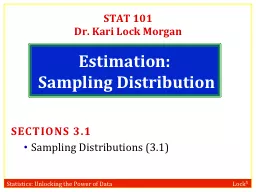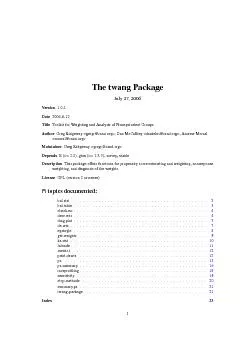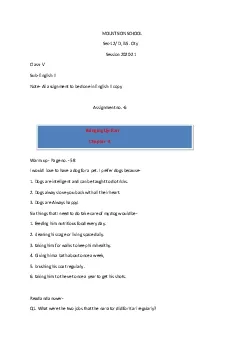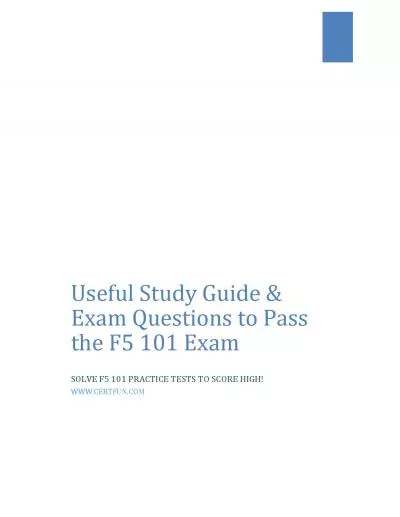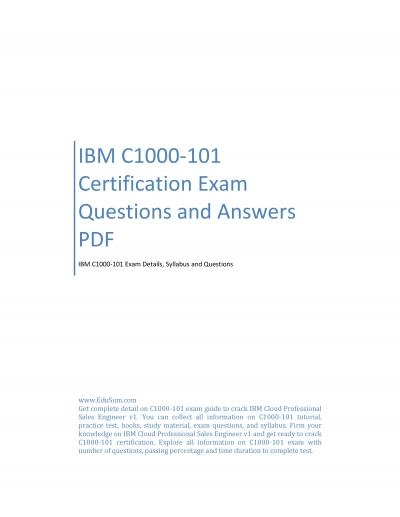PPT-STAT 101 Dr. Kari Lock Morgan
Author : gutsynumero | Published Date : 2020-06-23
Estimation Sampling Distribution SECTIONS 31 Sampling Distributions 31 Question of the Day What proportion of M amp M candies are blue The Big Picture Population
Presentation Embed Code
Download Presentation
Download Presentation The PPT/PDF document "STAT 101 Dr. Kari Lock Morgan" is the property of its rightful owner. Permission is granted to download and print the materials on this website for personal, non-commercial use only, and to display it on your personal computer provided you do not modify the materials and that you retain all copyright notices contained in the materials. By downloading content from our website, you accept the terms of this agreement.
STAT 101 Dr. Kari Lock Morgan: Transcript
Estimation Sampling Distribution SECTIONS 31 Sampling Distributions 31 Question of the Day What proportion of M amp M candies are blue The Big Picture Population Sample Sampling. Stat 150 Spring 2015 Syllabus http://www.stat.berkeley.edu/~sly/Stat 150Spring 2015Syllabus.pdf Instructor : Allan Sly GSI: Jonathan Hermon Course Webpage : http://www.stat.berkeley.edu/~sly/STAT1 2bal.stat bal.stat Description bal.statcomparesthetreatmentandcontrolsubjectsbymeans,standarddeviations,effectsize,andKSstatisticsUsage bal.stat(data,vars=NULL,treat.var,w.all,get.means=TRUE,get.ks=TR OVERVIEW. Definition. Benefits, features, specifications. Functions. Components. Supplies and storage requirements. Sample collection & precautions. Method to use & maintenance. Quality control. Department of Statistics. Penn State . University. USA. Making computing skills part of learning introductory stats. Royal Statistical Society. 10/13/16. ASA 2016 Recommendations for Intro Stat. GAISE: Guidelines . Without family and friends you cannot be happy. Giving gifts is better than receiving them. We can only be truly happy if we live in the moment. Everyone should celebrate Christmas. It doesn’t matter what happens after you die; you should only care about what happens in this life.. Describing Data: One Variable. SECTIONS 2.1, 2.2, 2.3, 2.4. . One categorical variable (2.1). One quantitative variable (2.2, 2.3, 2.4). Announcements. Homework 1 due now – turn it in according to lab section. Alon Lavie. Language Technologies Institute. Carnegie Mellon University. Joint work with:. Erik Peterson, Alok Parlikar, Vamshi Ambati, Abhaya Agarwal, Greg Hanneman, Kevin Gimpel, Edmund Huber. March 28, 2008. Steve Greenleaf (916) 802-5420 J.P. Morgan Ventures Energy Corporation and BE CA, LLC. (together, JP Morgan) September 4, 2009 J. P. Morgan appreciates this opportunity to provide comments on the CAI DHAN GOPAL MUKERJI CHAPTER I BRINGING UP KARI KARI, the elephant, was five months old when he was given to me to take care of. I was nine years old and I could reach his back if I stood on tiptoe. Sec-12/ D BS CitySession 2020-21Class-VSub-EnglishIINote-All assignment to be done in English II copyAssignmentno-6Warm up -Page no -58I would love to have a dog for a pet I prefer dogs because-1 Dogs Here are all the necessary details to pass the F5 101 exam on your first attempt. Get rid of all your worries now and find the details regarding the syllabus, study guide, practice tests, books, and study materials in one place. Through the F5 101 certification preparation, you can learn more on the F5 Application Delivery Fundamentals, and getting the F5 Certified BIG-IP Administrator certification gets easy. Start Here--- https://bit.ly/3UqxnfC ---Get complete detail on 101 exam guide to crack F5 Certified BIG-IP Administrator. You can collect all information on 101 tutorial, practice test, books, study material, exam questions, and syllabus. Firm your knowledge on F5 Certified BIG-IP Administrator and get ready to crack 101 certification. Explore all information on 101 exam with number of questions, passing percentage and time duration to complete test. Get complete detail on C1000-101 exam guide to crack IBM Cloud Professional Sales Engineer v1. You can collect all information on C1000-101 tutorial, practice test, books, study material, exam questions, and syllabus. Firm your knowledge on IBM Cloud Professional Sales Engineer v1 and get ready to crack C1000-101 certification. Explore all information on C1000-101 exam with number of questions, passing percentage and time duration to complete test. Get complete detail on C1000-101 exam guide to crack IBM Cloud Professional Sales Engineer v1. You can collect all information on C1000-101 tutorial, practice test, books, study material, exam questions, and syllabus. Firm your knowledge on IBM Cloud Professional Sales Engineer v1 and get ready to crack C1000-101 certification. Explore all information on C1000-101 exam with number of questions, passing percentage and time duration to complete test.
Download Document
Here is the link to download the presentation.
"STAT 101 Dr. Kari Lock Morgan"The content belongs to its owner. You may download and print it for personal use, without modification, and keep all copyright notices. By downloading, you agree to these terms.
Related Documents

